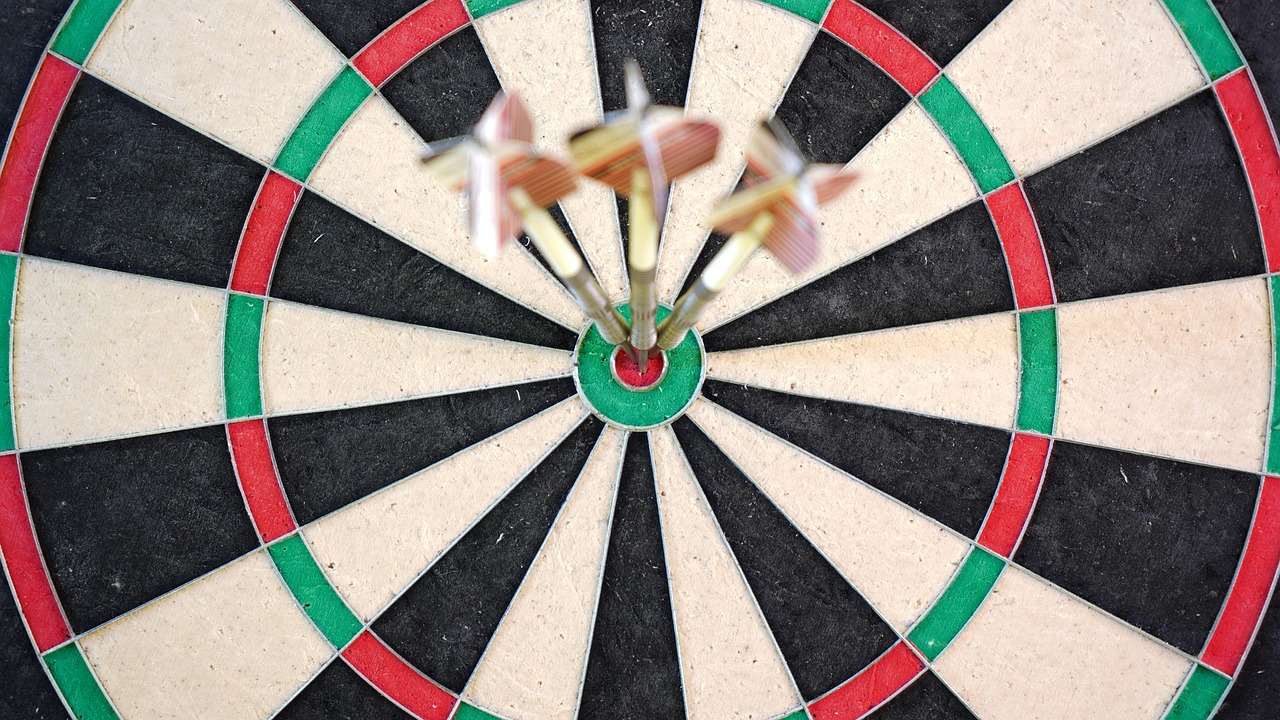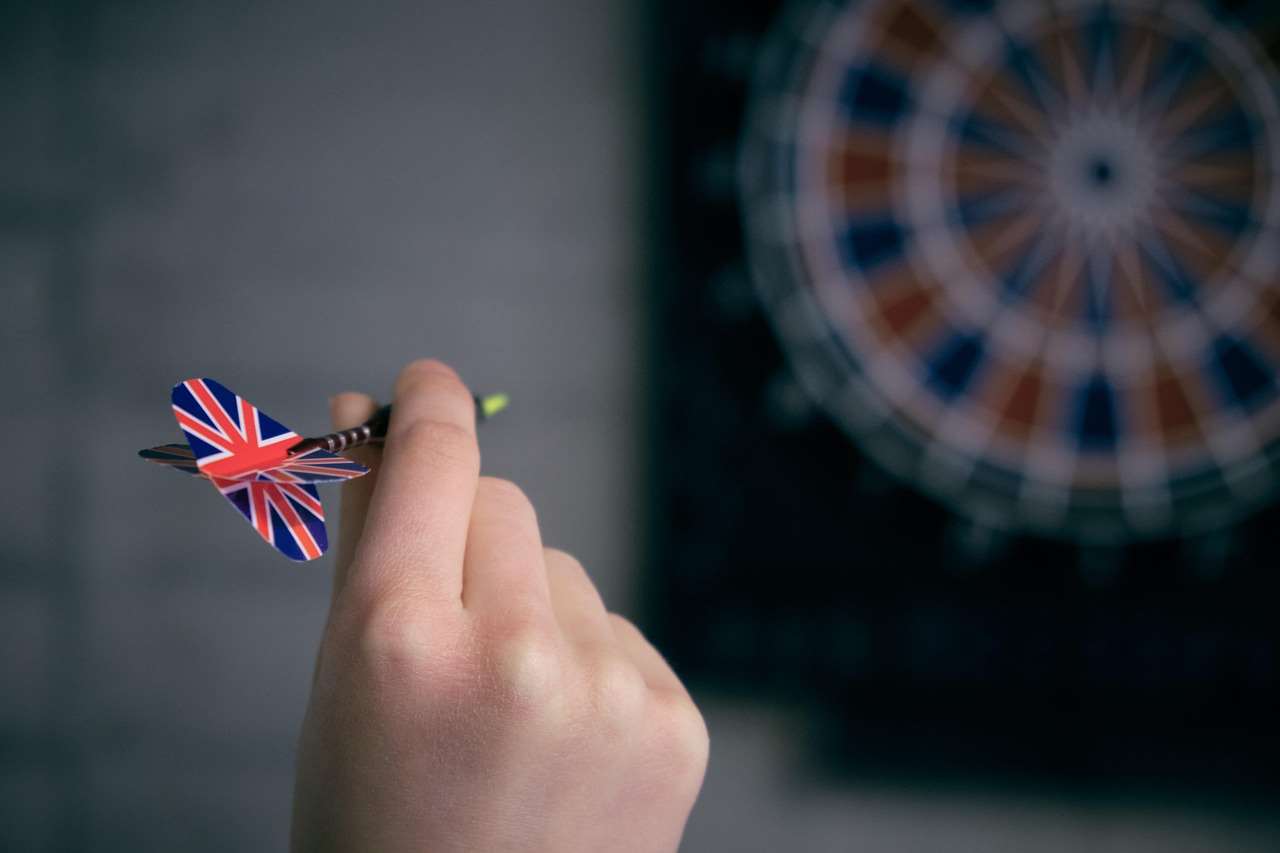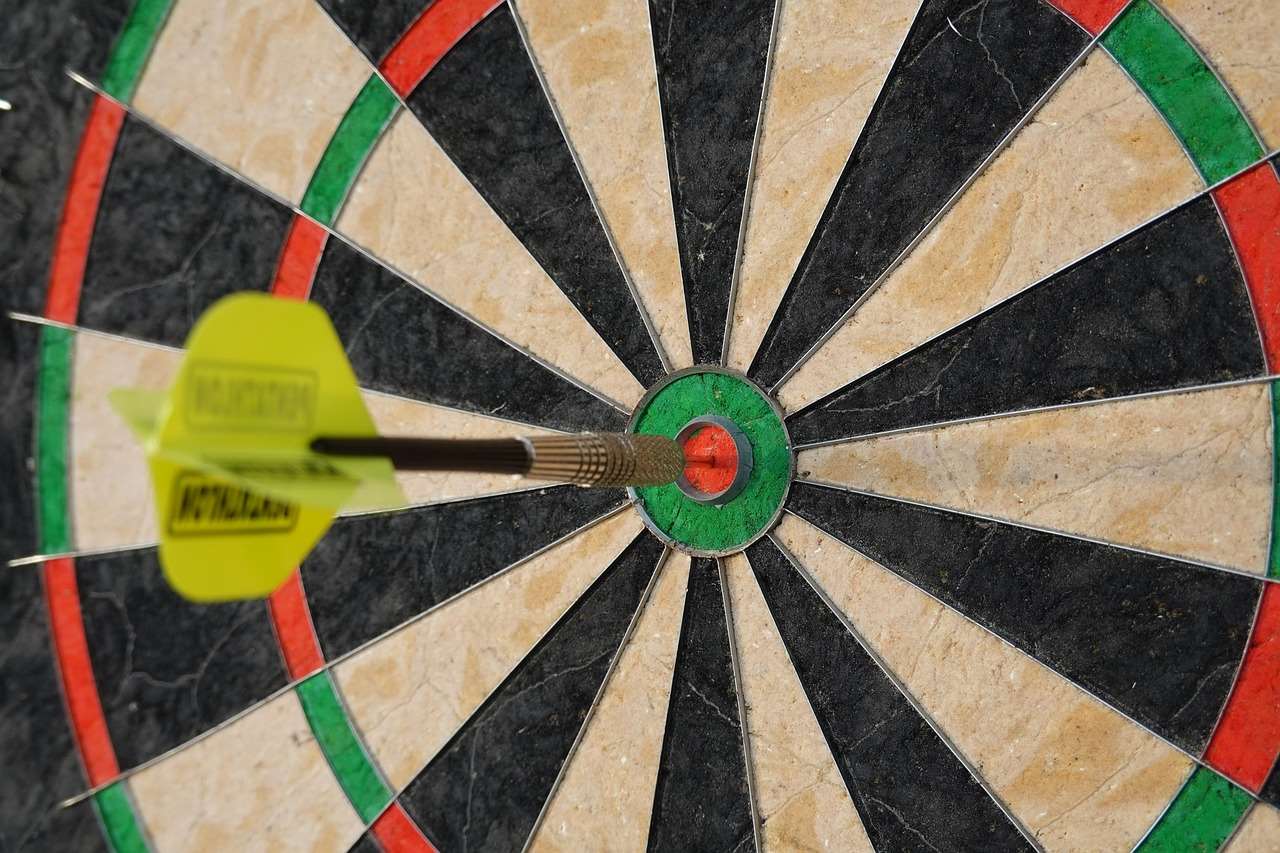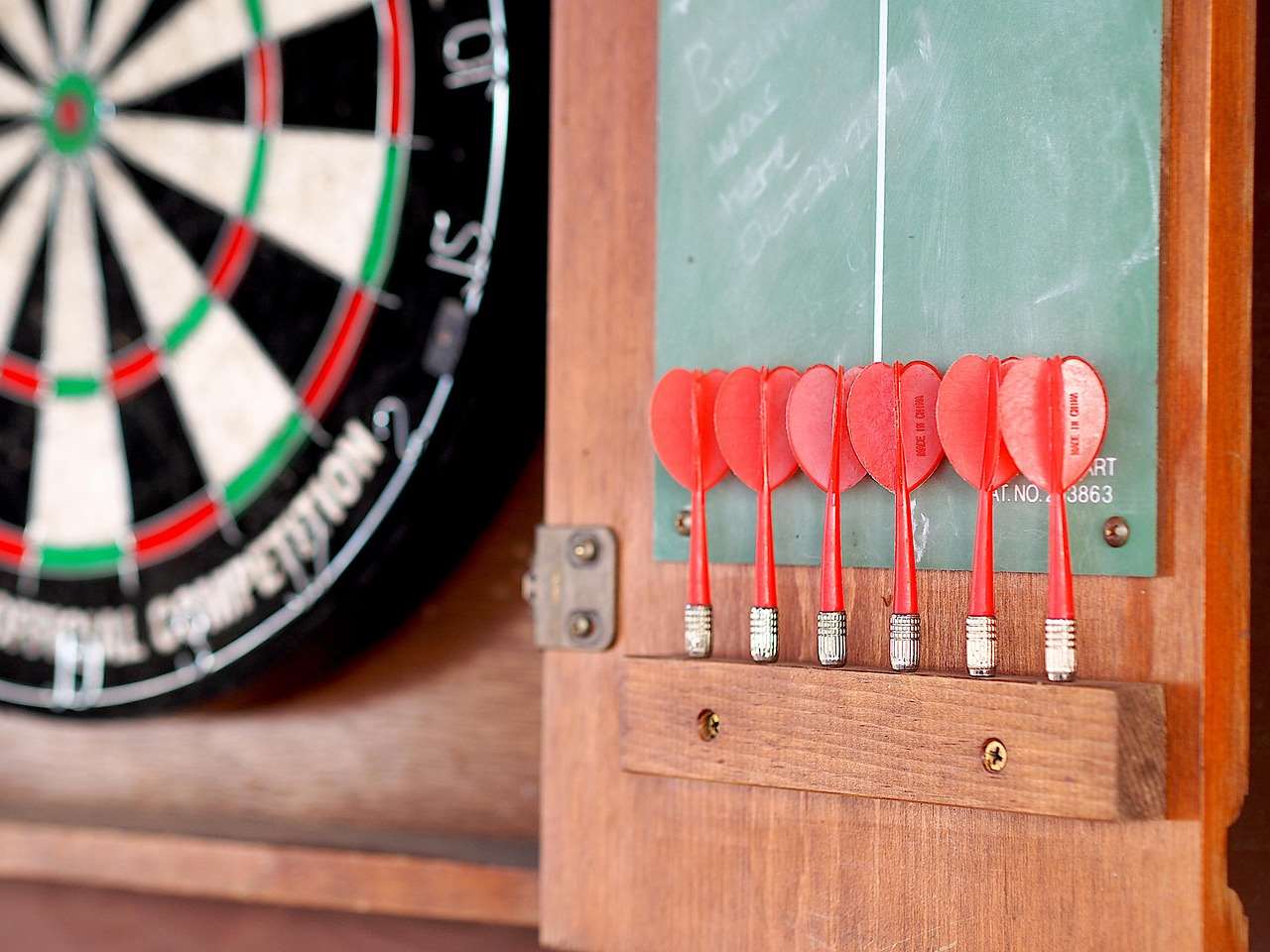Mastering darts betting strategy development hinges on understanding player statistics, match dynamics, and available betting markets to identify profitable opportunities. This article will guide you through building a robust betting strategy, covering essential data analysis, bankroll management, and specific betting approaches to improve your long-term profitability when betting on darts.
⚠️ Still Using Pen & Paper (or a Chalkboard)?! ⚠️
Step into the future! The Dart Counter App handles all the scoring, suggests checkouts, and tracks your stats automatically. It's easier than you think!
Try the Smart Dart Counter App FREE!Ready for an upgrade? Click above!
Understanding the Fundamentals of Darts Betting Strategy Development
Before diving into specific strategies, it’s crucial to establish a solid foundation. This involves understanding the basic rules of darts, the different types of bets available, and the factors that influence match outcomes. Neglecting these fundamentals will severely hamper your ability to implement a successful darts betting strategy development process. Consider your **bankroll management** as important as which player will win a match. Proper money management can keep you in the game for the long term.

Key Elements to Consider
- Know the Rules: Familiarize yourself with the rules of various darts games, especially 501, which is the most common format in professional tournaments.
- Understand Betting Markets: Explore different betting markets like match winner, handicap betting, total 180s, highest checkout, and correct score. Each market requires a slightly different analytical approach.
- Identify Influencing Factors: Recognize factors that impact performance, such as player form, head-to-head records, stage experience, and playing conditions. For example, some players excel in televised events, while others perform better in smaller tournaments.
Analyzing Player Statistics for Darts Betting
Data analysis is the cornerstone of any effective darts betting strategy development. Instead of relying on gut feelings, analyze statistics to gain an edge. Several key metrics can help you assess a player’s ability and predict their performance.
Essential Player Statistics
- Average: The average score per three darts thrown. A higher average indicates greater consistency and scoring power.
- Checkout Percentage: The percentage of legs or sets a player wins when they have a double to finish. A high checkout percentage demonstrates composure and finishing ability under pressure.
- 180s per Leg: The frequency with which a player scores a maximum of 180. This statistic reflects a player’s scoring power and aggression.
- First 9 Darts Average: The average score a player achieves in their first nine darts. This provides insight into how quickly a player establishes control in a leg.
You can find these statistics on various darts data websites and use them to compare players and identify potential betting opportunities. Be sure to consider the sample size; a player with a high average over a few matches might not be as reliable as a player with a consistently good average over a longer period. Always consider also the Business of Darts. It helps to understand the dynamics around professional players.

Utilizing Statistics to Predict Match Outcomes
Once you have gathered player statistics, use them to build a model for predicting match outcomes. For instance, you can compare the averages of two players and adjust your predictions based on their checkout percentages and 180s per leg. Furthermore, factor in head-to-head records to understand how players perform against each other specifically.
Remember that statistics provide a probability, not a guarantee. Unexpected events can always happen in sports, so incorporate a margin of error into your predictions.
Specific Darts Betting Strategies to Implement
With a strong understanding of fundamentals and data analysis, you can now explore specific betting strategies that can enhance your profitability.
Handicap Betting Strategy
Handicap betting involves giving one player a virtual lead or deficit. This is useful when there is a clear favorite in a match. For example, if Michael van Gerwen is heavily favored against a lower-ranked player, you might bet on the lower-ranked player with a +2.5 leg handicap. To win, the underdog would need to win at least three more legs than the favorite. This strategy can offer better odds than simply betting on the match winner. Also, understanding darts tv rights value can help you assess how seriously a player is taking the event.
Total 180s Betting Strategy
This market involves betting on the total number of 180s scored in a match. To succeed in this market, analyze the 180s per leg statistics of each player. Some players are more prone to hitting maximums than others. Also, consider the length of the match format. Longer matches offer more opportunities for 180s. Look for discrepancies between the implied total 180s based on the odds and your statistical analysis.

Correct Score Betting Strategy
This is a high-risk, high-reward strategy where you bet on the exact score of a match. While difficult to predict accurately, identifying matches where one player is significantly better than the other can provide opportunities. Research head-to-head results and past performances to gauge the likelihood of certain scores. A deep understanding of how how darts media deals work might influence performance can also be a key insight.
In-Play Betting Strategy
In-play betting involves placing bets during a live match. This strategy requires keen observation skills and the ability to react quickly to changing circumstances. For example, if a player starts poorly but shows signs of improvement, you might bet on them to win the next leg or set. However, be cautious with in-play betting; the odds can fluctuate rapidly, and it’s easy to get caught up in the excitement.
Bankroll Management: A Crucial Component of Darts Betting Strategy Development
No matter how sophisticated your betting strategies are, they will be ineffective without proper bankroll management. Bankroll management is the process of managing your betting funds responsibly to minimize risk and maximize long-term profits. Effective darts betting strategy development demands disciplined bankroll management.
Key Principles of Bankroll Management
- Set a Budget: Determine a specific amount of money you are willing to allocate for darts betting and stick to it. Never bet more than you can afford to lose.
- Use a Staking Plan: Implement a staking plan to determine the amount you bet on each match. A common approach is the percentage staking method, where you bet a fixed percentage of your bankroll on each bet.
- Avoid Chasing Losses: It’s tempting to increase your bets after a loss to recoup your money, but this is a dangerous strategy. Stick to your staking plan and avoid emotional decisions.
- Track Your Results: Keep a record of all your bets, including the stake, odds, and outcome. This will help you identify successful strategies and areas where you need to improve.

Staking Plans for Darts Betting
- Fixed Staking: Bet the same amount on every bet. This is a simple and conservative approach, suitable for beginners.
- Percentage Staking: Bet a fixed percentage of your bankroll on each bet. This adjusts your stake based on your bankroll size, protecting you from significant losses.
- Kelly Criterion: A more advanced staking method that calculates the optimal stake based on the perceived edge and odds. This requires a high degree of accuracy in your predictions.
Choose a staking plan that aligns with your risk tolerance and betting style. Remember that consistency is key to successful bankroll management.
Advanced Darts Betting Tips and Considerations
Beyond the core strategies, several advanced tips can further enhance your darts betting strategy development. Mastering these nuances can give you a significant edge over other bettors.
Understanding Player Psychology
Darts is a mental game, and understanding player psychology can be invaluable. Some players thrive under pressure, while others crumble. Observe player body language, facial expressions, and interviews to gauge their confidence and mental state. Consider how a player might react to a specific opponent or situation. Player Psychology can have an impact on PDC Sky Sports deal worth as well.
Exploiting Bookmaker Biases
Bookmakers are not always perfect and can exhibit biases in their odds. Look for situations where the odds don’t accurately reflect the true probabilities. This could be due to public perception, recent results, or a lack of specialized knowledge. Identifying and exploiting these biases can be a profitable strategy.

Following Darts News and Insights
Stay up-to-date with the latest darts news, including player form, injuries, and tournament schedules. Follow reputable darts websites, social media accounts, and podcasts to gain insights from experts and insiders. This information can help you make more informed betting decisions. Consider ITV darts broadcast deal to see when you can watch live darts.
Conclusion
Developing a successful darts betting strategy development requires a combination of fundamental knowledge, data analysis, specific betting approaches, and disciplined bankroll management. By understanding player statistics, analyzing match dynamics, and implementing proven strategies, you can increase your chances of long-term profitability. Remember to continuously refine your approach based on your results and stay informed about the latest developments in the world of darts. Now that you are armed with this information, start implementing these strategies and transform your darts betting experience. Good luck!
Hi, I’m Dieter, and I created Dartcounter (Dartcounterapp.com). My motivation wasn’t being a darts expert – quite the opposite! When I first started playing, I loved the game but found keeping accurate scores and tracking stats difficult and distracting.
I figured I couldn’t be the only one struggling with this. So, I decided to build a solution: an easy-to-use application that everyone, no matter their experience level, could use to manage scoring effortlessly.
My goal for Dartcounter was simple: let the app handle the numbers – the scoring, the averages, the stats, even checkout suggestions – so players could focus purely on their throw and enjoying the game. It began as a way to solve my own beginner’s problem, and I’m thrilled it has grown into a helpful tool for the wider darts community.